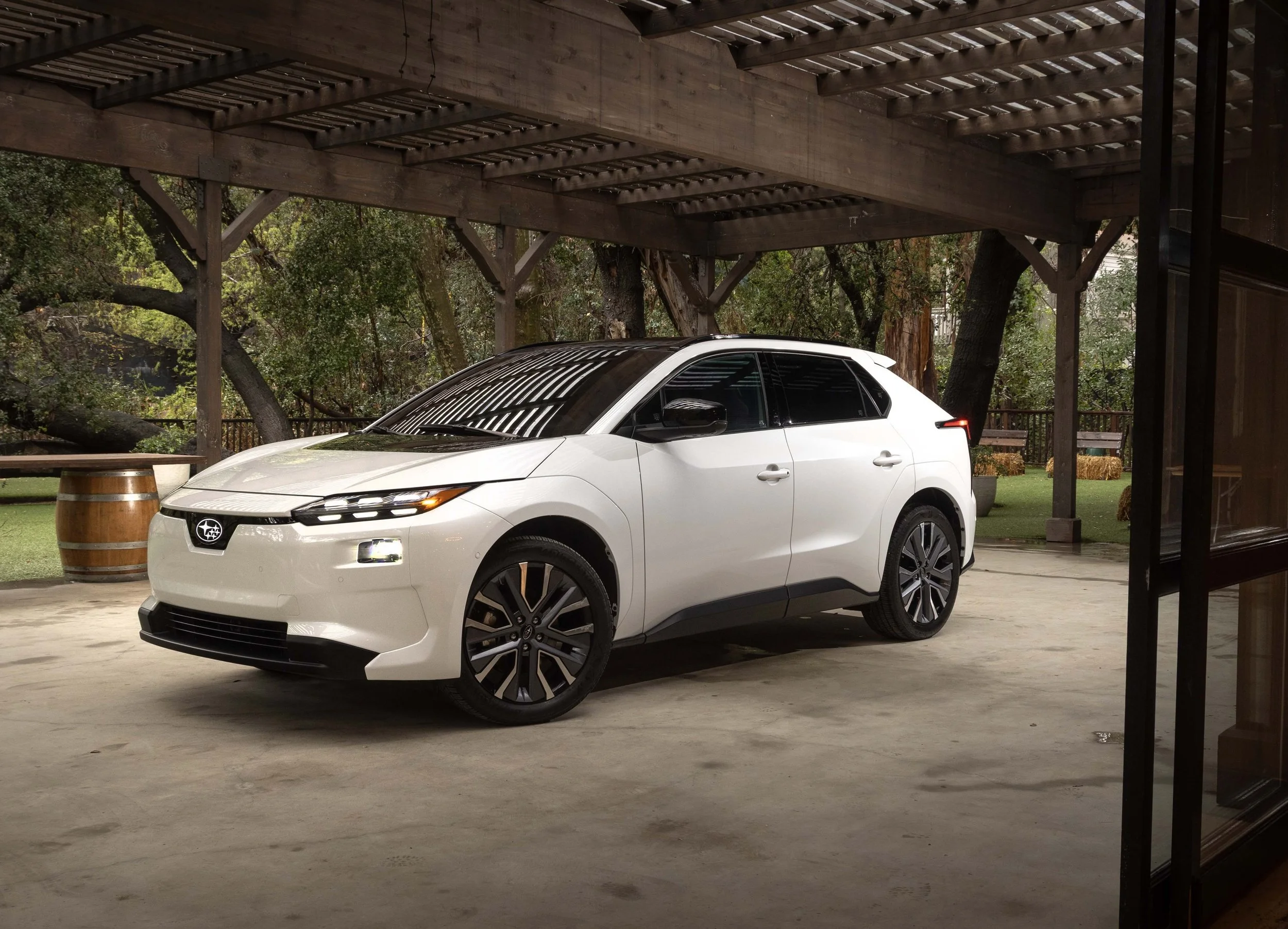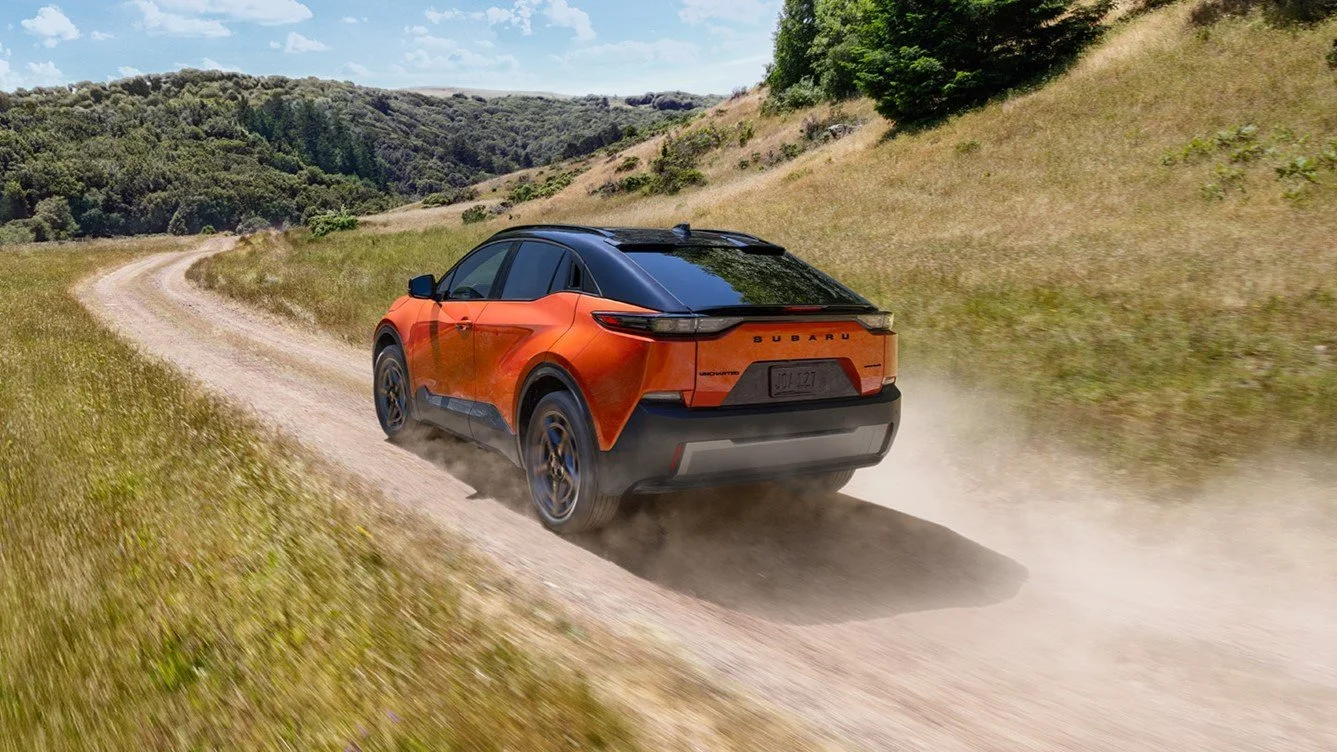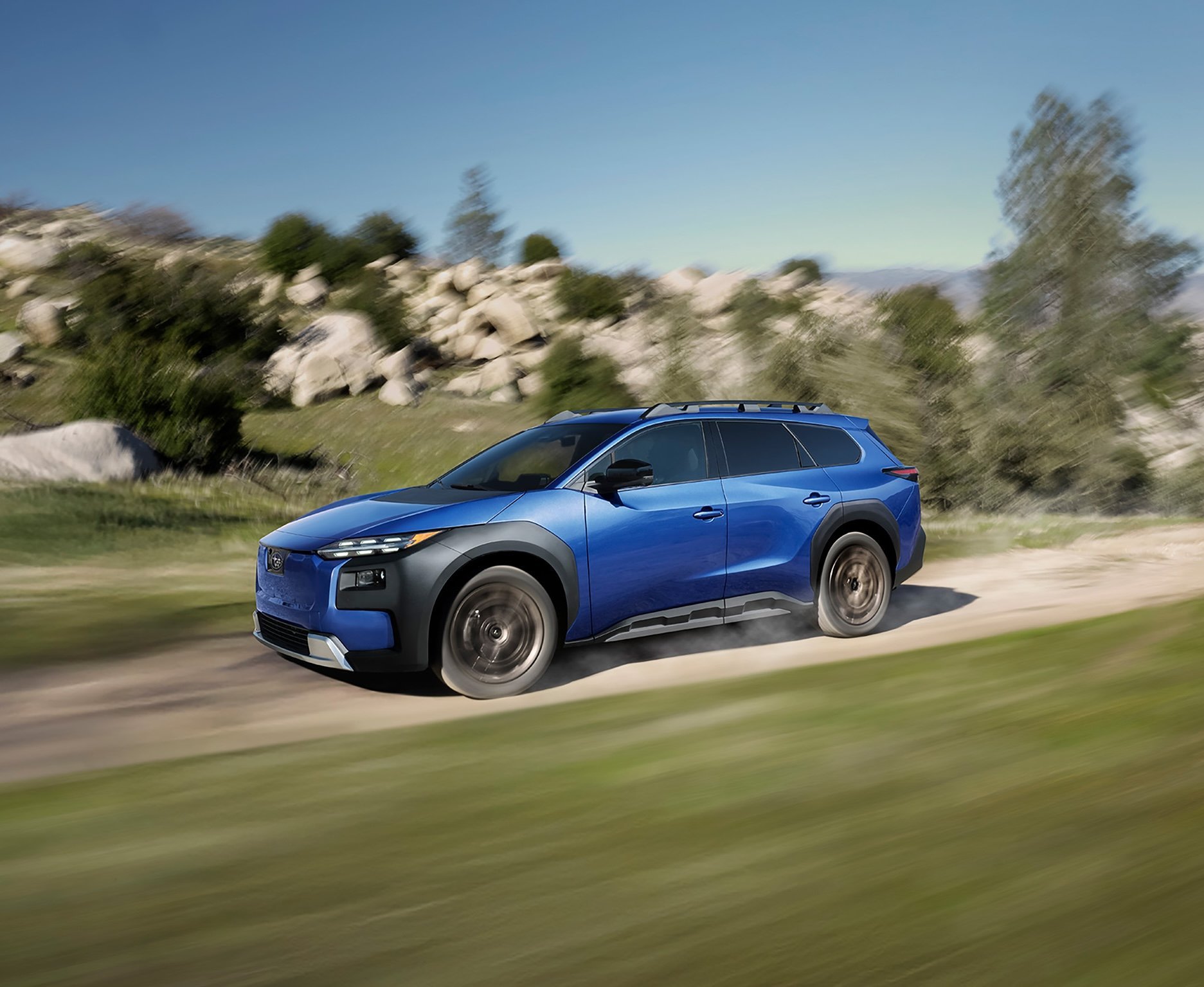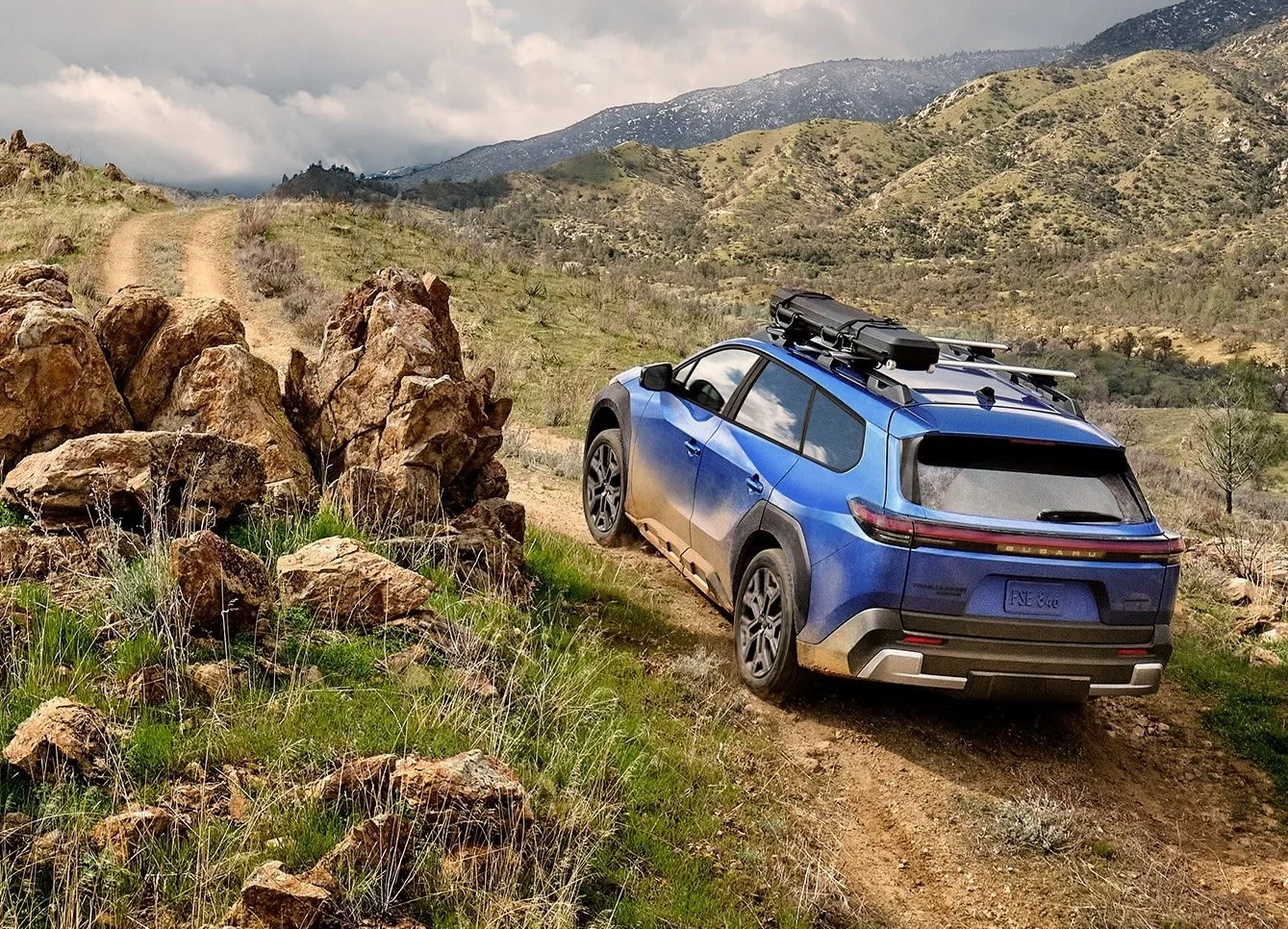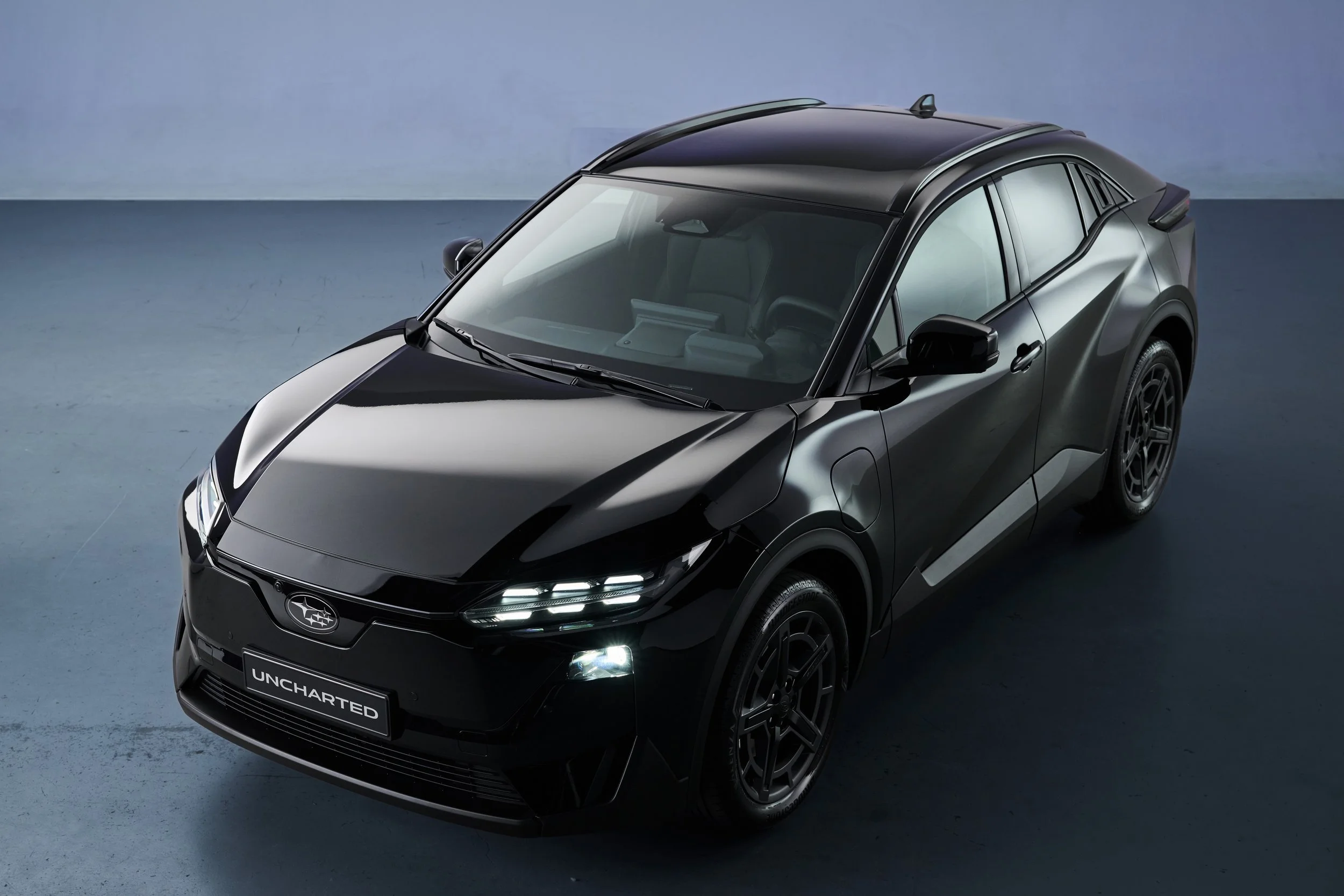LATEST NEWS
Enhanced, additional EVs in Subaru’s thoughts
Richard Bosselman
July 21, 2025
The depressed EV market hurt Solterra sales, but this hasn’t dissuaded the national distributor. But it’s cautious now.
GRUELLING times for the electric car sector last year presented a much tougher terrain that Subaru expected for its dirt-focused Solterra, but the make is staying true to presenting a battery car.
Conceivably, one entry into the EV sector might one day becomes three.
Trailseeker, a Solterra spin-off but also cited as Subaru's first electric car to be developed in-house, is also under consideration for local provision.
And while it is for now purely for Europe and North America, deliveries beginning next year, a third model called the Uncharted (below) - effectively an electric equivalent of the brand’s petrol Crosstrek crossover and Forester sports utility - cannot logically be entirely discounted.
The cars all share DNA link: Solterra is of course twinned with the Toyota bZ4X and the Uncharted is based on the Toyota C-HR Plus. Trailseeker shares the same platform as those machines.
The extended partnership between the two brands means they are set to develop more joint EV models, although Subaru is adamant it is working on its own purely developed in-house EVs for 2028 onwards.
Consideration of the refreshed Solterra and Trailseeker - whose station wagon looks and nuggety aptitude have seen it being officially renamed the ‘e-Outback’ in the United Kingdom - is well under way, a spokesman for Subaru in New Zealand has indicated.
However, exact timing and market representation for those car has yet to be decided.
“Our electric vehicle strategy is pretty clear and Solterra still plays a part of that,” Inchcape NZ head of distribution Jerry Delaney said during a recent media event for the new Subaru Forester.
In respect to the vehicles’ release timing? That’s where it gets a little hazy.
The issue isn’t a lack of faith in the technology - it’s far more reflective of uncertainty about the market environment.
The EV sector having all but completely collapsed after Government pulled rebates and implemented Road User Charges on electric has rattled all sellers.
Delaney admits future planning is affected by consideration to taking greater caution than would have been the case in 2020 through to 2023, when EV sales kept climbing.
“At the end of the day the EV strategy in terms of what we bring in will be dictated by the expected volume.
So “we don’t have a timeframe (for facelift Solterra)” and as for Trailseeker (above), which spawns off the same platform and is being labelled Subaru’s first standalone electric model, “I can’t announce anything at the moment.”
Both cars unveiled at the New York Motor Show in April and have entered production, initially for North America.
Trailseeker being labelled an ‘electric’ Outback reflects that it has a station wagon shape.
Also a similar stance: like Solterra, Trailseeker has a 210mm ground clearance - so, just 10mm shy of the standard ride height for Subaru’s internal combustion off-road capable cars.
It is also intended to present as the name suggests; a more robust and off-seal themed alternate to Solterra, which in itself has surprisingly nuggety attributes.
As presented for the US, the Trailseeker uses a 74.4kWh battery - also shared with latest Solterra - and has 280kW spread across two electric motors, for four-wheel drive.
On the US EPA electric range test, Subaru quotes a range of 420km. The EPA test is generally seen as stricter than the our WLTP test, raising thought that Subaru might predict around to 500km of official range in this market.
Like Solterra, Trailseeker has gets Subaru's excellent X-Mode off-roading assist with Snow/Dirt and Deep Snow/Mud driving modes, plus 'Grip Control' traction control and 'Downhill Assist Control'.
Trailseeker is also rated to tow up to 1588kg braked and offers several drive models for surfaces including snow and deep mud, as well as a hill descent control system. Inside, it's said to offer slightly more cargo space than the Solterra, putting it on a par with the Outback.
Trailseekers also has an impressive package of safety features based around make’s camera-and-sensor 'EyeSight' system.
This system includes pre-collision braking, front cross-traffic alert, blind spot monitors, lane departure alert, a panoramic view camera system, emergency stop assist, traffic jam assist, lane change assist, and advanced adaptive cruise control.
The cabin adopts a lot from the facelift Solterra, with a high-set instrument panel, a small, squared-off wheel, and a 14-inch touchscreen. There are 15-watt wireless phone charging pads and USB-C sockets.
Solterra’s mid-life update is also major; like the recently facelift bZ4X it achieves radically different front styling and new 18- and 20-inch alloy wheels.
Fair to middling range has been a Solterra bugbear. The new battery, together with an improved battery management system, is said to lend 25 percent more range on one charge.
New Solterra also benefits from a new battery pre-conditioning system, which allows DC charging at up to 150kW, giving it a 10-80 percent charge in 'less than 35 minutes’.
Uncharted, meantime, is being suggested as being a rival for the likes of the Kia EV6, also set to express a sporty persona but with far more rugged utility. T It also gets the same suite of off-road driving modes as the latest Forester.
While its silhouette is identical to the Toyota twin, the Uncharted bolsters its off-road credentials with a raised ride height (to 210mm), chunky black body cladding and functional roof rails.
Like revised Solterra and Trailseeker, it takes a blanked-off grille, but flanked by the new six-element LED daytime running lights. Black badges have also been added to align with the Uncharted’s “tough compact character”.
Uncharted is offered with a choice of two batteries, with front- and four-wheel-drive powertrains available.
The entry-level model is fitted with a 123kW front-mounted electric motor and a 57.7kWh battery pack giving up to 444km of range.
Models fitted with the larger 77kWh battery can be had in both two- and four-wheel-drive form. The single-motor, front-wheel drive model makes 165kW and can travel up to 584km on a charge. The twin-motor, meanwhile, offers up to 470km of range, but makes 252kW, can sprint from 0-100kmh in five seconds and tow up to 1500kg.
All batteries can accept a peak charging speed of 150kW, with a 10-80 percent boost achieved in around 30 minutes.

